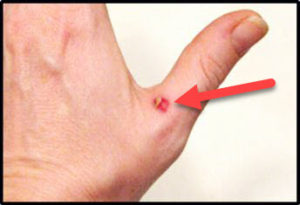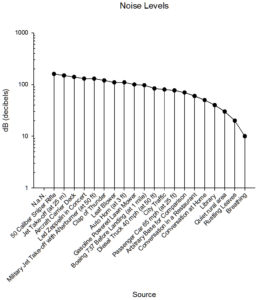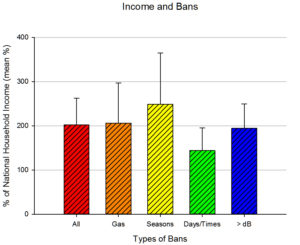The Fall equinox has passed as well as the equilux, the day when light and dark are of equal length, signaling the beginning of Fall. Here in the South we enjoy comfortable temperatures often well into November, so it is not always easy to tell that the seasons are changing, as the clear, crisp days of Fall are still a way off. However, the leaves are beginning to change color.
The verdant greens that characterize vegetation in Atlanta in summer are due to the presence of chlorophyll, green pigment found in the cyanobacteria (obtain their energy through photosynthesis) and chloroplasts (the actual photosynthesis engine) in the leaves. Photosynthesis is the process enables plants to grow, as well as store glucose for the dormant winter period. Fall colors are due to a class of molecules called flavonoids which are water soluble pigments in the leaves. Yellow and orange colors are derived from flavonoids called carotenoids which give color to corn, daffodils, buttercups, and bananas, and anthocyanins, another flavonoid group, gives red color to cranberries, strawberries, red apples, and plums.
With the reduction in daylight length, photosynthesis decreases and finally shuts down. Green chlorophyll disappears from the leaves. What is left are carotenoids and anthocyanins, hence the brilliant fall colors. Veins that carry fluids out of the leaf gradually close off as a layer of cells form at the base of each leaf. Once separation is complete and connecting tissue is sealed off, the leaf is ready to fall.
What does this brief exposition on leaves have to do with the blog? Falling leaves become the enemy of most homeowners. Since we have committed to the ridiculous custom of planting grass around our houses, fertilizing it, mowing it, edging it, aerating it, watering it, disinfecting it, and cleaning it, one cannot allow leaves to accumulate on the precious grass. The nasty old leaves look unattractive and if left unattended will kill the underlying grass. For hundreds of years, lawns and gardens in the US and Europe have been maintained with a simple, manually operated rake. Leaves are raked into piles that are carried away from the lawn and are burned. The residual ash quickly becomes incorporated into the soil and life goes on. For the more environmentally concerned, leaves which must be mulched, then added along with food scraps and other organic substances into a compost pile. In any event, the main evidence that leaves have been taken care of is the classic non-lethal, but painful raker’s thumb. See Figure 1.

Figure 1: Dreaded Raker’s Thumb
In post WWII America, numerous devices were designed to make life easier for the homeowner, and it was not long until an enterprising entrepreneur, Dom Quinto, invented the leaf blower. Originally designed as an agricultural chemical sprayer, it did not take the enterprising gardener very long to remove the chemical dispenser leaving only a gasoline powered blower. Like so many inventions, leave it to the Californians to accept new technology first. Water conservation efforts in California led to the widespread use of the new-fangled leaf blower to accomplish tasks previously accomplished using a water hose and spray nozzle. Californians were already looking for an alternative to the dreaded rake long before Quinto’s invention.
Leaf blowers are a popular item with homeowners, as well as virtually every lawn maintenance company in the US. The cacophony of sound echoing off adjacent homes is well known in suburbia thanks to the zealous homeowners who crank their machines up at the crack of dawn. For those in-town dwellers, lawn maintenance crews attend to the 25 ft2 of lawn in front of the leasing office with a battalion of leaf blowers and mowers. It is axiomatic that all lawn maintenance commences at the earliest possible hour, so even those without a lawn to care for are still tormented.
It is obvious that leaf blowers are easier to use and less time consuming than hand raking, but are there costs associated with their use? The typical 2-cycle gasoline powered leaf blower according to a 2011 test by Edmunds, an online resource for automotive information, revealed that a consumer-grade leaf blower emits more pollutants that a 6,200 pound 2011 Ford F-150 SVT.[i]

Figure 2: Sources of Noise
And then there is the noise. Figure 2 shows the decibel level output from an array of noise producing sources. Leaf blowers at 110dB rank just below a clap of thunder and military jet taking off with afterburners at full power at 50 feet.
Of course, there are differences between continuous and instantaneous noise exposure, but experts agree that prolonged exposure to anything over 80 dB can result in hearing loss, and instantaneous exposure to 150 dB can rupture eardrums. Clearly, leaf blowers are not immediately life-threatening, but they are hazardous to your health. Why then, are they virtually ubiquitous throughout the US? If they do pose noise and pollution hazards, can’t they be made quieter and less polluting? Indeed, they could, but regulators are reluctant to pass legislation mandating improvements. The most often heard excuse is that tightening engine standards would cost US jobs and send manufacturers overseas. Yes, folks, it is lobbyists for Briggs and Stratton, Echo, Homelite, Stihl, Home Depot, Lowe’s and the like that make such common sense environmental improvements impossible in the service of corporate profits.
It is true that in the modern world leaf blowers are not the primary concern of our legislators, but it is equally true that lobbyists for the manufacturers of such devices want to keep it that way. How else can we rid ourselves of the scourge of such machines?
One answer that has received some traction in local communities afflicted with this first-world problem, is to ban them. Communities have banned all leaf blowers, banned gasoline powered models, banned their use except for certain seasons, mandated their hours of operation and/or their decibel level. Interestingly, this is a solution to a problem that is not high on the priority list for most Americans. Ordinances to control the use of leaf blowers are relatively rare across the US, with only 86 cities and counties in seven states imposing bans. On the other hand, virtually every state has state and local ordinances to control the indiscriminate urination and defecation of family pets, clearly an issue of much greater concern than irritating leaf blowers.

Figure 3
Since it is unlikely that anyone will successfully ban pets from our neighborhoods, are ordinances really the answer to our pressing leaf blower problem? No, they are a short-term solution to a much larger issue. The underlying issue is the complete control of government by business. Figure 3 summarizes ordinances regarding leaf blowers across the US and the proportion of the US average household income for the cities and counties with bans. It is easy to see that all communities banning leaf blowers have household incomes well above the median for the nation. This suggests, on first blush, leaf blowers are only a problem for the relatively affluent. Further examination suggests otherwise.
Those who can afford the expense of a lawn are the target audience for the leaf blower market. These are also the people who can afford to have companies care for their lawns. By banning leaf blowers, we are taking money from those who do the work that most of us find unpleasant at best. Sure, some of you are thinking that taking care of the lawn is my hobby, and that may be true for a few. It is my experience, that yards with “Lawn of the Month” signs are the homes to unhappy people who find sweating in their yard preferable to prolonged contact with other family members family members.
Lawn maintenance companies prohibited from using leaf blowers claim that they cannot afford to do business without them, since the time involved in raking a yard is prohibitive, even at today’s minimum wage. Reduced demand for their services means fewer people employed to do lawn maintenance. So here is the dilemma. Manufacturers want to produce the least costly product possible. Regulations to make leaf blowers quieter and less polluting would increase manufacturing costs significantly, according to the leaf blower industry. In order to maintain their profit margin, the price of the leaf blower to consumers would go up as the manufacturers would pass the increased costs onto the consumer. How expensive leaf blowers would become is contingent on whether the manufactures are willing to reduce their profit margin. Everyone would admit that this is an unlikely possibility. So in order to keep the price of leaf blowers as low as possible while maintaining profit margins, manufacturers do everything in their power to thwart an attempts to make these devices environmentally friendlier and safe for the consumer.
So what’s the take home message? When you are awakened by a lawn maintenance crew mowing the yard next door and blasting the leaves and debris into the street, don’t be mad at them. These are folks that are just doing their job. Blame money in politics and the economic fear of potential loss of jobs for the awful smelling exhaust and the loud noise.
[i] http://www.edmunds.com/about/press/leaf-blowers-emissions-dirtier-than-high-performance-pick-up-trucks-says-edmunds-insidelinecom.html
EO Smith
Latest posts by EO Smith (see all)
- Patriotism - 4 July, 2017
- The Super Sucker Bowl - 10 February, 2017
- Alternative Facts and Science - 24 January, 2017


